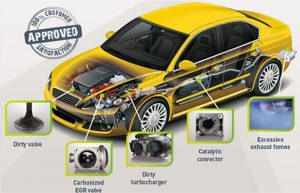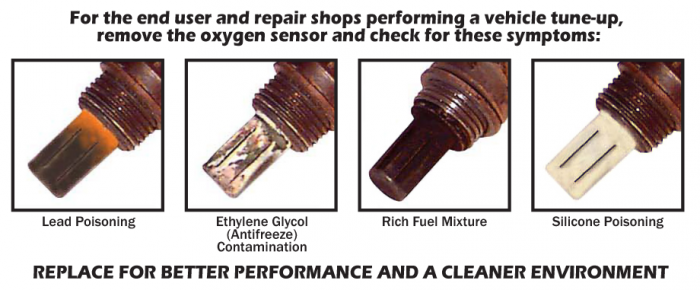 The oxygen sensor is a device which determines the oxygen content of the exhaust gas. Since the amount of oxygen in the exhaust gas is a very good indicator of combustion efficiency, it is also the best place to monitor the air fuel ratio.
The oxygen sensor is a device which determines the oxygen content of the exhaust gas. Since the amount of oxygen in the exhaust gas is a very good indicator of combustion efficiency, it is also the best place to monitor the air fuel ratio.
Select your vehicle options on the right to find the right oxygen sensors for your vehicle. Find Walker oxygen sensor.
Located in the exhaust system, the oxygen sensor produces a voltage proportional to the amount of oxygen in the exhaust versus the air (<150 mV lean & >750 mV rich). This data is used to control the air-fuel mixture through PORT or TFI injectors and carburetors. Sensors are monitored or checked anywhere from 4 to 100 times per second. The air-fuel mixture is thus always moving from rich to lean averaging very close to stoichiometric (ideal) ratios.
The ceramic sensor body is contained in a housing which protects it against mechanical effects and facilitates mounting. The ceramic body is made of stabilized zirconium dioxide (zirconia). Its surfaces are coated with electrodes made of a gas-permeable platinum layer. In addition, a porous ceramic coating has been applied to the side exposed to the exhaust gas. This coating prevents contamination and erosion of the electrode surfaces by combustion residue and particulates in the exhaust gases.
Oxygen Sensors are precision made for outstanding performance and manufactured to meet and exceed all original equipment specification and test requirements.
- Improved Engine Response & Performance
- Lower Emissions
- Improved Fuel Economy
- Longer Sensor Life
- Meets OEM Specifications

 Oxygen sensors can fail when the sensor’s ceramic element is exposed to certain types of silicone compounds or when an oil-burning engine adds to the sensor becoming oil-fouled. Small amounts of tetra-ethyl lead in the gasoline or over-the-counter fuel additives, which are not “oxygen sensor safe”, can also kill an oxygen sensor.
Oxygen sensors can fail when the sensor’s ceramic element is exposed to certain types of silicone compounds or when an oil-burning engine adds to the sensor becoming oil-fouled. Small amounts of tetra-ethyl lead in the gasoline or over-the-counter fuel additives, which are not “oxygen sensor safe”, can also kill an oxygen sensor. Cleans your engine
Cleans your engine


